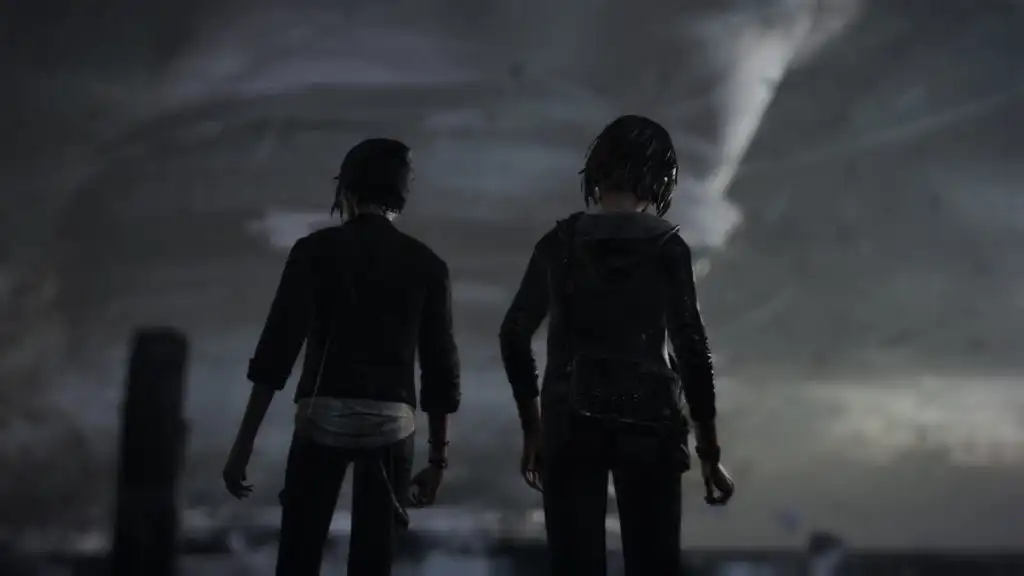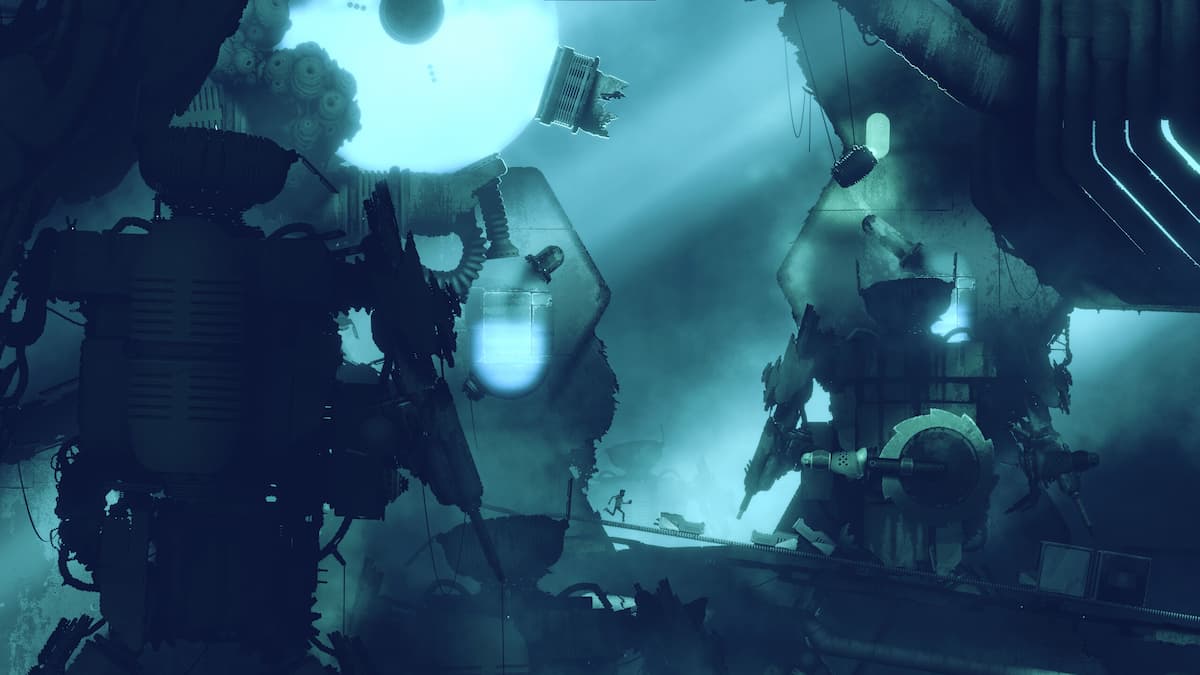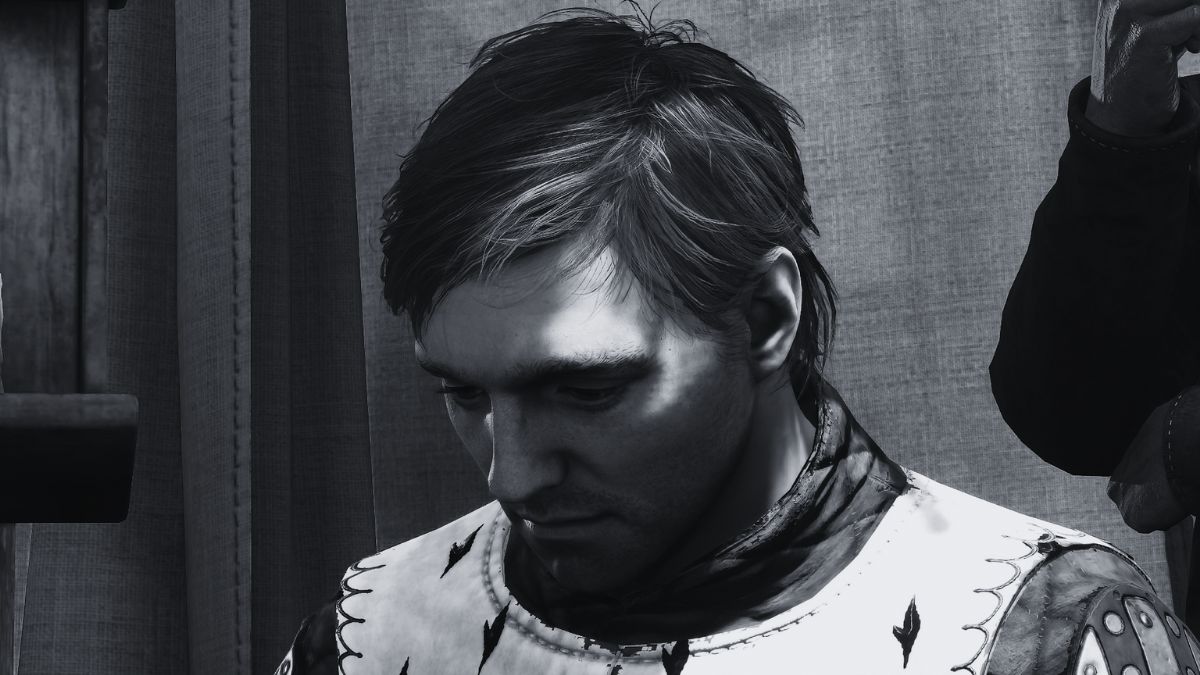Life is Strange is over. Manly tears have been shed. My heart has been broken. DONTNOD, you’re a bunch of magnificent, beautiful bastards, and I’ll never forgive you for this.
I’m going to avoid spoilers as much as humanly possible throughout this review, because I know a lot of you will be reading this because you’ve been waiting for the season to end before picking it up. On the other hand, I’m also going to talk about the final episode quite a bit, because obviously that’s just been released. Basically, it’s going to be a bit of a minefield for me, but I’m not going to spoil anything that you can’t see coming from the first trailer, or from the start of the very first episode, or whatever. I’ll be talking around things instead.
Also, apologies for length. I’m basically trying to review both the entire season and the final episode in one here, so this isn’t going to be a short piece.
Just in case you don’t trust me about spoilers, though, here’s my verdict: Life is Strange is a beautiful, heartbreaking, and surprisingly dark Telltale-esque adventure, and is easily one of the best Telltale-esque adventures that currently exists. It dips a little bit too far into artsy pretentiousness (although usually quite justifiably) and there are more than a few weak moments and slightly rubbish character arcs, but this does very little to detract from what’s otherwise a superb series.
As long as you don’t hate indie folk-rock and a little bit of artsiness, you will likely fall in love with it. Although it should probably come with several trigger warnings, because holy shit, I’m not kidding about how dark it can get. Insert score out of 10 here.

Fundamentally, Life is Strange is about three disparate story elements. The first – and, arguably, the catalyst for the whole game – is the mystery surrounding Rachel Amber’s disappearance. Is she alive or dead? Is she in hiding, or did she run away, or was she murdered? What happened? Why did it happen? Etc.
This leads directly into the second story element, which is the relationship between our protagonist Max Caulfield and her estranged friend Chloe Price. Chloe was friends with Rachel, and Rachel’s disappearance has hit her hard – and then Max suddenly shows up in town due to enrolling in the local academy after having moved away five years prior. They rekindle their friendship while investigating exactly what happened to Rachel Amber, during which both endure a kind of “coming-of-age” story.
This investigation is made considerably easier (and, in some cases, made possible) by virtue of the third story element. On the very same day that Max bumps into Chloe, Max discovers that she can rewind time by a limited amount, reverting recent events and giving her a chance to try things differently, while retaining any information or items that she’s picked up since. In fact, one of its first uses is to save Chloe’s life, which is a pretty good way of restarting a friendship.
Naturally, all three of these elements interlink, intersect, and spiral horribly out of control. And it doesn’t help that Max is having apocalyptic visions of a tornado destroying the town in just five days, or that other weird portents like dead birds and freak snowstorms keep occurring.

I think I initially described Life is Strange as “sort of like Veronica Mars by way of Donnie Darko”, and having now finished all of it, I’d say that bit of idle pigeon-holing holds up pretty well. I’d maybe throw in “with some mild Juno stylings” just because of how very indie it is in terms of both its painterly visuals and its breezy and melancholic music, but otherwise, I’ll stick with what I first said. Not least because I haven’t seen Juno in about eight years, so I might be remembering it wrong.
The setting of Arcadia Bay comes across as a fairly rural town with a pretty big divide between the haves and the have-nots, coupled with a lot of dark secrets, which is very Veronica Mars. Chloe’s mother runs a seaside diner, and you’ll likely end up chatting with fishermen, beggars, and low-level drug dealers living in trailers. But then there are the bitchy rich kids at school, and the old money Prescott family that seems to have its claws into everything.
Then there are the more mysterious Donnie Darko/The Butterfly Effect bits, with Max’s limited time-travel and the often unexpected consequences thereof. These are expertly handled, insofar as they don’t feel even remotely out-of-place – they slot perfectly into the world, the plot, and the story, and really aren’t just an extra gimmick to make this stand out from other WE WILL REMEMBER THAT decision-based games.

We should probably talk about those choices a bit. As with most games of this ilk, the main plot progresses regardless of the choices you make, but that’s mitigated somewhat in this case. Firstly, this kinda ties in with some of the game’s overarching themes, so it doesn’t feel like a cop-out. Secondly, even knowing that some of those choices won’t have much impact in the long run doesn’t mean they feel pointless. There’s one choice at the beginning of chapter four which I knew at the time would have absolutely no impact on the game, but it was still such a heart-rending decision that I sat there staring at the options for what felt like ten minutes before I could bring myself to click either one of them.
The time-rewinding also lets you make decisions and then rewind, so you can at least see the possible immediate aftermaths (if not the eventual consequences) without having to play through again, which is a nice little way of dealing with how the machinery behind Telltale’s stage plays gets very visible on repeat playthroughs. Life is Strange doesn’t try to hide this so much as embrace it somewhat, in a slightly meta way.
The game also acknowledges your choices quite well, both in terms of those that are plot-relevant and heavily signposted, and those that are a little more hidden. Every episode has Max’s classmate Alyssa getting into some sort of embarrassing scrape, which you can help her out of through the use of rewinding time. The game doesn’t make any sort of visible note as to whether or not you’ve done this, but it will recall this stuff later on, and in a few episodes these “minor” changes you can make turn out to be quite important.

Special mention must also be made of the way that the entire game is full of little, easily missable details. A huge amount of care and attention have been poured into pretty much every aspect of the environments, from the colour schemes to little bits and pieces you can examine, and there’s a whole hell of a lot I missed until I replayed certain scenes or went to look up the experiences of others.
I’m also quite pleased that Life is Strange bothered to include puzzles. Most are fairly simple and shouldn’t take more than a few minutes to work out, but they tend to rely on figuring out clever ways of using your time-rewinding to solve the problem at hand, and that’s usually pretty satisfying. The best are – paradoxically – not really puzzles at all, but occasions when you abuse your time-rewinding powers to find out information which you then use against other people in the scene. One moment in the diner does this perfectly, with three or four characters you can talk to in order to gather information, before rewinding and using that information against them.
It’s also got some mandatory stealth sections, which are about as shit as mandatory stealth sections in every non-stealth game. Thankfully, the time-rewinding mechanic makes these pretty simple, but I’d still sort of prefer it if they weren’t there, because mandatory stealth sections are shit.

The direct flipside to the shitty stealth is the glorious story. Characters occasionally delve too far into stereotypes and trying-too-hard teen dialogue, and the game eventually falls into a pattern of predictability when previously unpleasant characters open up and you suddenly learn who they are and why they’ve been dicks all along and now you’re super besties forever, but the overall effect is pretty damn spectacular. DONTNOD are experts at sticking a knife into your emotions and twisting, and they seem to take an almost sadistic glee in doing so quite regularly. Life is Strange made me laugh and it made me cry, because I found myself actually caring about these characters, and the important decisions you make are important in real life, not just in a fantasy world. If you take the choices seriously, then your decisions will probably say quite a lot about your outlook on life in general.
Now let’s talk about the finale, because that’s really quite important in the grand scheme of how good Life is Strange actually is. But without any real spoilers, obviously.
Episode 5 is… not great. It’s good! But it’s not great.

The primary problem episode 5 has is that it absolutely cannot please everyone, and its attempts to do so mean it’s not likely to feel totally satisfactory to anyone. A large part of the episode retreads what happened over the course of the series and the decisions Max made. To some extent, this works both to remind you of what you’ve done and to give you deeper insight into characters and past events based on what you’ve learned since. The flipside is that it’s very long and drawn out, to the point that I can see a fair few people just sprinting through these segments to get back to the meat of the episode. I nearly did so myself, but I didn’t want to miss anything.
It also doesn’t help that the villain of the piece loses pretty much all credibility and menace by drifting into typical villain rants, which totally fails to capitalise on (and, in fact, weakens) the looming horror that built up throughout the series, although it does at least do a good job of linking back to the game’s main themes (which I can’t really talk about without spoilers) and pointing you back to a lot of the hints and clues given earlier in the series. It’s possible to solve most of the mysteries of the game yourself before the answers are given, which is pretty important for any mystery. If it’s not possible to work it out yourself, then it simply feels like you’ve been cheated.

But there’s a lot to love about the episode anyway. Tears were shed, and one lengthy sequence towards the end is brilliantly messed up, particularly if you take the time to explore and investigate everything. And no, I really can’t say any more without spoilers – but it probably says something about the game that I kind of want to do a full, spoiler-heavy dissection of the game’s themes, the care and attention spent on pretty much aspect of it, and the meaning of lots of little bits and pieces. It’s one of the rare few games that can actually support a proper artistic critiquing. Fitting, considering how much of the game is about art.
So, to repeat the verdict from the start: Life is Strange is a beautiful, heartbreaking, and surprisingly dark Telltale-esque adventure, and is easily one of the best Telltale-esque adventures that currently exists. It dips a little bit too far into artsy pretentiousness (although usually quite justifiably) and there are more than a few weak moments and slightly rubbish character arcs, but this does very little to detract from what’s otherwise a superb series.
As long as you don’t hate indie folk-rock and a little bit of artsiness, you will likely fall in love with it. Although it should probably come with several trigger warnings, because holy shit, I’m not kidding about how dark it can get.

But I’m really, really torn on how to score it. Scoring it moment-to-moment, Life is Strange has little segments that are pretty much 10/10 by themselves, but there’s enough that doesn’t quite work and enough little failings that I can’t come close to justifying it for the game as a whole. The fact that the final episode – the grand resolution of every arc, and the ultimate closure of the mystery – has issues with pacing and characterisation has left a bit of a sour taste in my mouth, too, and there are plenty of little segments throughout the season that are, frankly, a bit crap.
This might be one of those scores I’m going to regret in a few weeks, because the game is still swirling through my head and I’m still processing it all. I might end up making an apologetic statement on the podcast that it deserved a point more or a point less. Either way, I can’t wait to see what DONTNOD do next, because they’re exceptionally skilled at twisting a somewhat stale set of mechanics into something that feels fresh, and using it to punch me right in the feelings. I’ve complained quite a lot, but don’t let that fool you: Life is Strange is absolutely worth experiencing, and lives up to the promise shown in its first few episodes.













Published: Oct 22, 2015 10:48 PM UTC